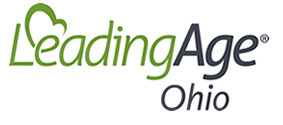Emergency Preparedness Toolkit
Welcome to the Emergency Preparedness Toolkit for long term care facilities. As providers of post-acute care, very high priority is given to the lives and safety of residents, staff, and community members during natural, man-made, and technical hazard situations. Fire safety drills and weather- related drills are common within our facilities, but drills focusing on the modern-day realities of an active shooter or a wide-spread infection are rare.
The impact of the terrorist attacks on September 11, 2001; the hurricane Katrina, superstorm Sandy; and the Ebola and Zika outbreaks showcased many problems within and among organizations, including but not limited to:
- Breakdowns in patient care
- Inconsistent standards
- Inconsistent levels of preparedness
- Poor communication
In September 2016, the Centers for Medicare and Medicaid Services (CMS) released new emergency preparedness requirements for 17 different types of health care providers including long term care. The rules were published in the Federal Register September 16, 2016, (Federal Register Vol. 81, No. 180). The advanced copy of “Appendix Z, Emergency Preparedness Final Rule Interpretative Guidelines and Survey Procedures” was published June 2, 2017, in S&C 17-29-ALL found here. The rules became effective November 15, 2016, and have an implementation date of November 15, 2017.
The new rule requires providers to demonstrate that they conduct risk assessments, identify potential hazards via an all hazard approach; write a detailed emergency preparedness plan; revise and establish policies and procedures; and training and testing of the emergency preparedness plan with facility staff and partners in the community.
Just as Health and Safety requirements have a set of F-tags and Life Safety Code (LSC) requirements have a set of K-Tags that are utilized for citations, the emergency preparedness requirements will have a set of E-Tags. State survey agencies will have discretion as to whether Health and Safety or LSC surveyors will conduct the emergency preparedness surveys beginning November 15, 2017. The current survey processes and enforcement procedures will remain the same.
The CMS final rule outlines 4 core elements of an Emergency Preparedness Program:
- Risk Assessment and Emergency Planning
- Develop an emergency preparedness plan based on facility and community risk assessments and utilizing an all hazards approach - addressing patient populations, services offered for continuity of operations and succession plans.
- Policies and Procedures
- Develop emergency preparedness policies and procedures based on risk assessment, communication plan and the emergency plan – while coordinated with the facility assessment. Need to address subsistence needs, resident tracking, evacuation process and shelter in place, protection of medical information and documentation, and arrangements with other community providers in the event of an evacuation or resident transfer.
- Communication Plan
- Develop an emergency preparedness plan which addresses a comprehensive communication plan that complies with federal, state and local laws; the communication plan must include contact information for relevant partners, processes for the exchange of resident information and primary and alternate means of communication.
- Training and Testing
- Develop an emergency preparedness training and testing program based on the risk assessment, communication plan and emergency plan; annual training for all staff on all emergency preparedness policies and procedures; conduct and participate in two annual exercises – one of which must be a full-scale community-based exercise.
This toolkit is designed to walk you through the 4 core elements: giving you definitions, templates, tools, best practices, and additional resource sites to produce plans for your unique risks.
RESOURCES LIST:
- Implementation Guide
- Overview
- Risk Assessment and Planning
- Sample Emergency Plan
- Policies and Procedures
- Incident Command System
- Communication
- Training and Testing
- Training Plan
- Powerpoint
- CMS NFPA Crosswalk
- Toolkit Resources
- Tags for Post Acute Care
Sound, timely planning is the foundation for effective emergency management. A coordinated response is essential. The best plans are not created in isolation. An internal team with representation from all departments and all levels of staff -- in true Quality Assurance and Performance Improvement (QAPI) fashion – will produce a better result. Early in the planning process, the team should also reach out to local, county/parish, tribal, regional, state, and federal coalitions.
Their resources are plentiful. Start here to identify state contact information.
Insurance carriers are also excellent sources of emergency planning materials, including a variety of checklists and templates based upon best practices and sound stewardship to protect both lives and property.
Additionally, CMS suggests providers reach out to their regional emergency response – focused health care coalitions. There are numerous coalitions in each state, in which they have resources, tools and can provide assistance in developing an Emergency Preparedness Plan as well as assist with the testing and training requirements.
Emergency Preparedness is an on-going process. Leadership must make it a priority and not only support team members’ time to complete the task but also eliminate roadblocks to success. The Emergency Preparedness Plan shall be incorporated as applicable with the Facility Assessment. The team will prioritize review, revision, and creation tasks. The regulation itself requires regular training and drills as well as annual plan reviews. Feedback and analysis are key components for effective plans, action, and recovery. Systems -- well-designed and well-practiced -- will give staff, residents, and the community confidence in the facility’s ability to respond in times of emergency.
Federal Regulations for Long Term Care
Regulations
Quality
Need Help?
Stephanie DeWees, HSE, LPN, LNHA, BS
Quality & Regulatory Specialist - Long Term Care
614-545-9034
sdewees@leadingageohio.org
- Supports planning and execution of the association's education initiatives for long term care
- Provides resources for quality and regulatory strategies
- Offers 911 survey support
- Facilitates networking opportunities through regional events
- Provides training on state and national trends, initiatives and enforcement
- Staff liaison to Professional Development Committee and SNF/AL Subcommittee


